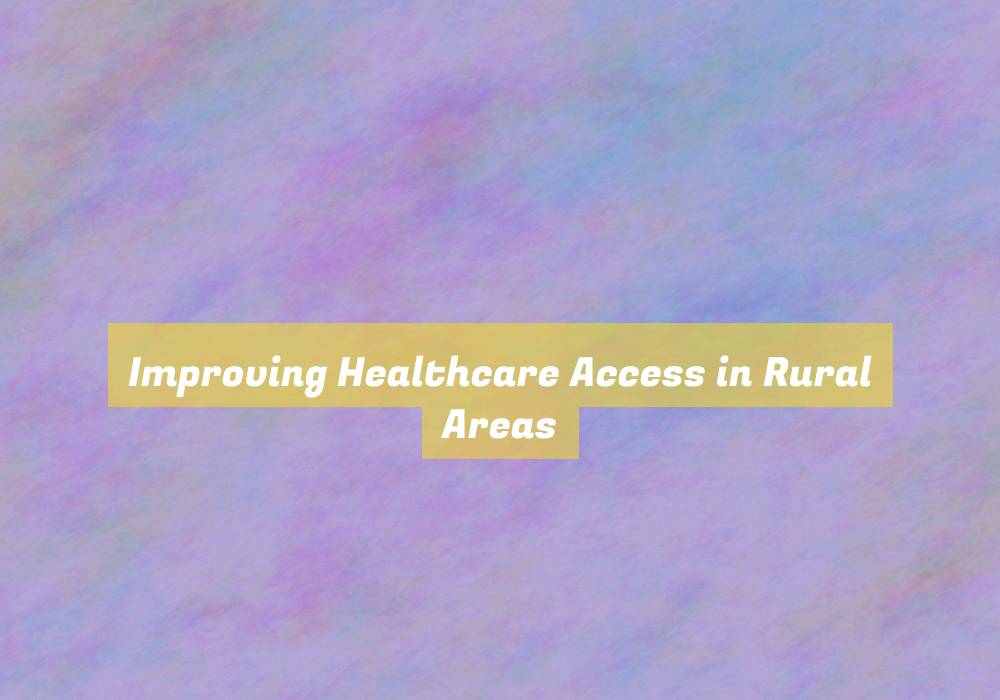Improving Healthcare Access in Rural Areas
In todayG??s fast-paced healthcare landscape, itG??s crucial to address the persistent challenge of providing adequate access to medical services in rural areas.
While progress has been made in urban centers, rural communities continue to face significant barriers to healthcare.
However, with innovative strategies and targeted interventions, there are tangible ways to bridge the gap between rural patients and essential medical care.
By exploring the potential solutions and advancements in this area, you can gain valuable insights into the transformative possibilities for healthcare access in rural regions.
Challenges in Rural Healthcare Access
Improving healthcare access in rural areas can be challenging due to limited resources and the scarcity of healthcare facilities. When you live in a rural area, accessing healthcare may mean traveling long distances to the nearest hospital or clinic. This can be particularly difficult in emergencies when every minute counts.
Additionally, there may be a shortage of healthcare professionals in rural areas, making it harder to receive timely care. Limited funding and financial constraints can also impact the availability and quality of healthcare services in these areas. As a result, preventive care and routine check-ups may be overlooked, leading to more severe health issues in the long run.
Moreover, the lack of advanced medical equipment and technology in rural facilities can hinder the diagnosis and treatment of complex medical conditions. These challenges contribute to disparities in healthcare access between rural and urban areas, affecting the overall well-being of rural populations. Finding solutions to overcome these obstacles is crucial for ensuring equitable access to healthcare for all.
Telemedicine Solutions for Rural Areas
In rural areas with limited healthcare resources, embracing telemedicine solutions can significantly enhance access to timely medical care and specialized expertise.
Telemedicine utilizes technology to connect patients in remote locations with healthcare professionals, enabling virtual consultations, diagnosis, and treatment. This approach reduces the need for patients to travel long distances for medical appointments, saving time and resources.
Additionally, telemedicine facilitates collaboration between local healthcare providers and specialists from urban centers, allowing rural patients to benefit from specialized medical knowledge without leaving their communities.
Moreover, telemedicine can support continuity of care by enabling follow-up appointments and monitoring for chronic conditions, ultimately improving health outcomes in rural areas.
Furthermore, telemedicine can provide mental health support, which is often scarce in rural areas, through virtual therapy sessions and counseling.
Mobile Clinics and Outreach Programs
Consider implementing mobile clinics and outreach programs to bring essential medical services directly to underserved rural communities.
These initiatives can bridge the gap in healthcare access by delivering preventive care, screenings, vaccinations, and basic treatments to remote areas. Mobile clinics equipped with healthcare professionals, diagnostic tools, and essential medications can provide on-the-spot care, reducing the need for rural residents to travel long distances for medical attention.
Outreach programs can also educate communities about health issues, promote preventive care, and facilitate access to ongoing treatment.
Funding and Policy Initiatives for Rural Healthcare
To address the challenges faced by rural communities in accessing healthcare, itG??s essential to explore funding and policy initiatives that can provide sustainable support and infrastructure for rural healthcare services.
One key approach is the allocation of increased federal and state funding specifically earmarked for rural healthcare. These funds can be utilized to improve facilities, recruit healthcare professionals, and implement telemedicine programs, which are especially crucial in remote areas.
Additionally, policymakers should consider developing and implementing policies that incentivize healthcare providers to practice in rural areas, such as offering loan repayment programs or tax incentives.
Furthermore, itG??s imperative to establish policies that support the sustainability of rural hospitals and clinics, as they often operate on thin margins due to lower patient volumes. This could involve adjusting reimbursement models to account for the unique challenges faced by rural healthcare providers.
Conclusion
In conclusion, improving healthcare access in rural areas requires innovative solutions like telemedicine and mobile clinics.
It also needs strong funding and policy support to address the unique challenges faced by rural communities.
By implementing these strategies, we can ensure that everyone, regardless of their location, has access to quality healthcare.
ItG??s time to prioritize the health and well-being of rural residents and work towards creating a more equitable healthcare system for all.







